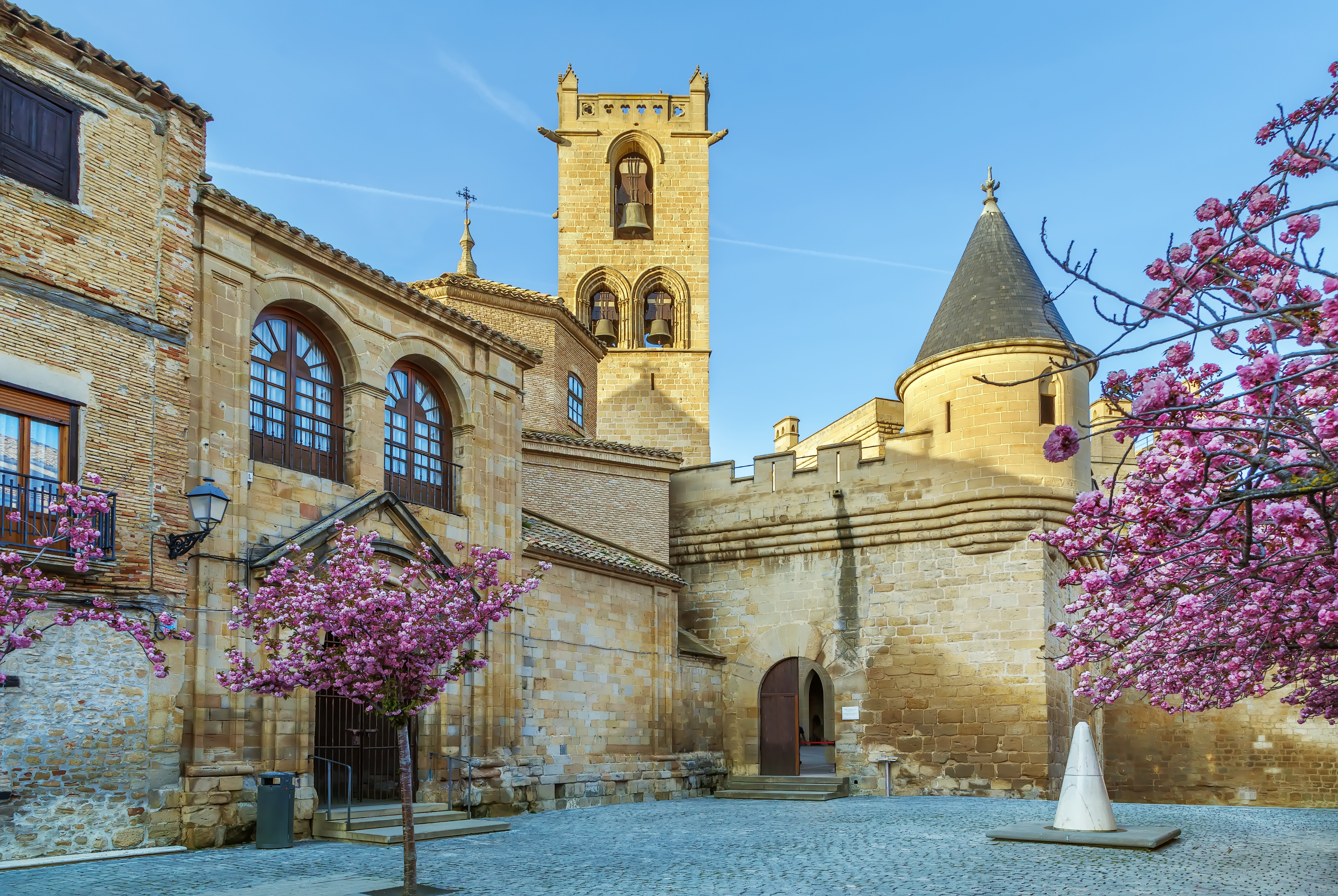This compact region of northern Iberia (10,400 square kilometres/just over 4,000 sq. miles) boasts a proud and ancient lineage, and Navarre´s cities and towns offer visitors a wealth of art, architecture, history, and Bsque-flavoured culture, along with some of the peninsula’s best ecotourism treasures, from the craggy Pyrenees in the north to the plains of the Ebro River in the south. All accompanied by world-class cuisine with the freshest of ingredients and Navarrese wines of exquisite vintage.
And whilst its capital Pamplona (aka Iruña, of “running of the bulls” fame) is the best known of its population centres, there are plenty of other marvelous smaller cities and towns which provide visitors with fascinating glimpses back into that illustrious history. Prominent among these are Estella, Puente la Reina, Tudela, Viana – and of course the town we´re talking about today: Olite (pop. barely 4,000) – a half hour south of Pamplona and founded after the Romans and before the Moors by the Visigoths in the
The Castle´s Background
Construction began in the 13th century, but it wasn´t till the 15th that its expansion got underway in earnest, under Navarre´s then king Charles III, who belonged to the French House of Evreux. That explains the use of the French Gothic – seen also in the cathedrals of Chartres and Notre-Dame de Paris – emphasizing features like verticality as well as the use of rib vaults, flying buttresses, and huge stained-glass windows which filled their interiors with light. That, plus the soaring interiors in the Mudéjar style (a hybrid Moorish-Christian architectural form created by Muslim artisans and architects in post-Reconquest Iberia), has made this masterpiece one of Navarre´s top attractions, drawing some 150,000 to this small town every year.

What´s to See Here?
Starting from the entrance, at Plaza de Carlos III El Noble, we find a Gothic-style space with an irregular silhouette and a feel similar to that of the facade of Notre-Dame Cathedral. From here, the visit to this castle unfolds a bit like an adventure, letting you explore its numerous nooks, crannies, and passageways, along with the gardens, which once housed exotic plants and even some animals. Inside you will be able to see the salon of arches (a room for underground archery practice), the gallery, the king’s and queen’s chambers, the Aljibe (a tower dedicatd to supplying running water), and other towers including the whimsical Tres Coronas and the most spectacular of all, the Torre del Homenaje, some 40 meteres (131 feet) high and with 136 steps. Finally, there are a pair of fine courtyards, the Patio de la Pajarera and the Patio de la Morera, located in front of the Golden Gallery or Great Tower, and to the west of the New Tower.
Beyond the Castle
Some of the other musts throughout this atmospheric old town include the 13th-century Church of Santa María la Real, very close to the castle, its façade packed with sculptures; the Enozentrum, all about Navarrese wine (Olite is considered the capital of Navarre´s wine country, and you can also tour nearby wineries); a wall dating back to Roman times; and the also 13th-century Convent of San Francisco. And if you have time left, we recommend that you visit the Bardenas Reales. 45 minutes south, region of semi-desert where wind and water have turned the local clay, chalk, and sandstone into amazing canyons, plateaus, hills, and phantasmagorical shapes (tours are available).
And finally, if you can, stay a night to enjoy an evening stroll along the cobblestone streets and a hearty Navarrese meal in a cosy eatery. Even better, try to visit during August´s Fiestas Medievales (held this year the 11th through the 13th), with all manner of pageantry, jousting, medieval markets – and of course, much juggling.
It´s an experience you won´t soon forget!
For more information in English, check out Visita.Navarra.es.
Photos | Wirestock; Borisb17

